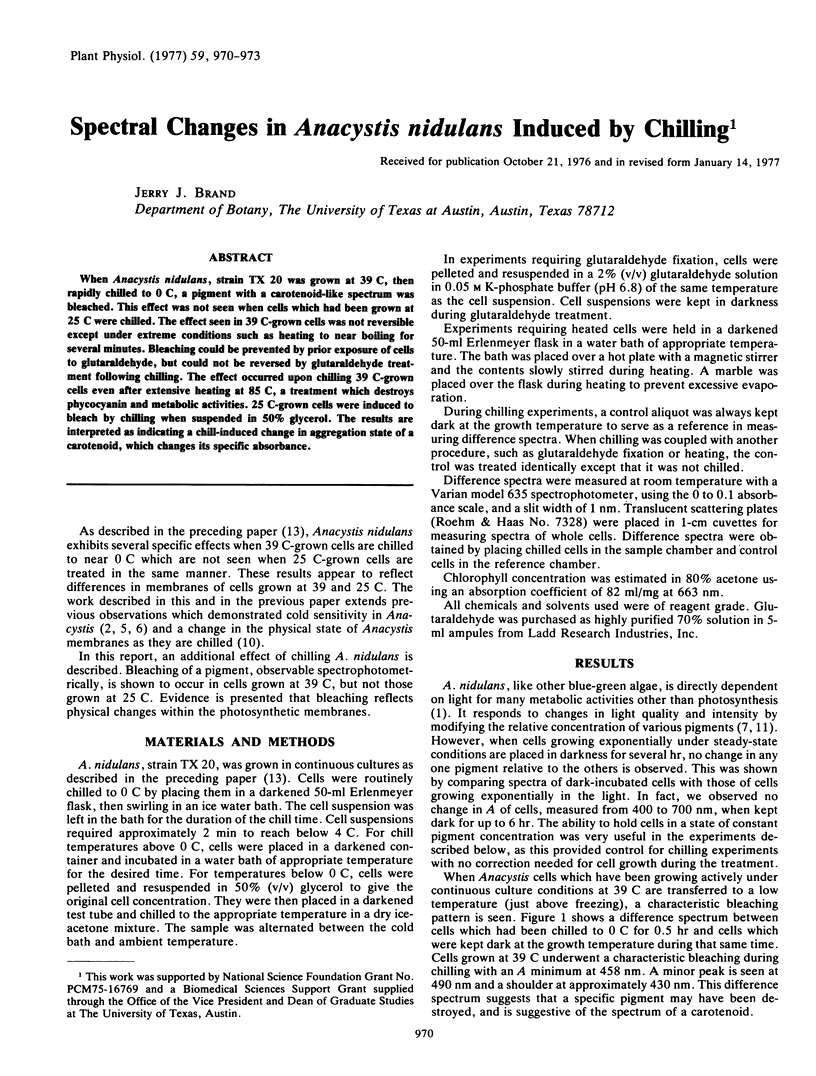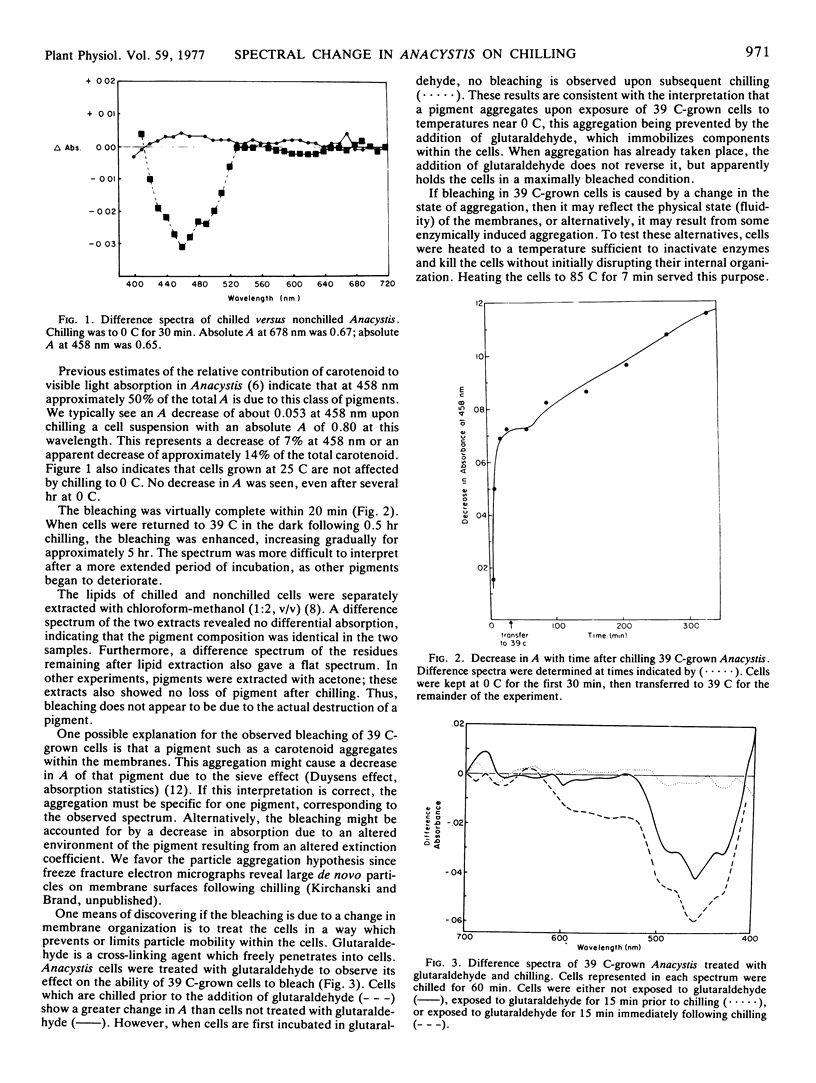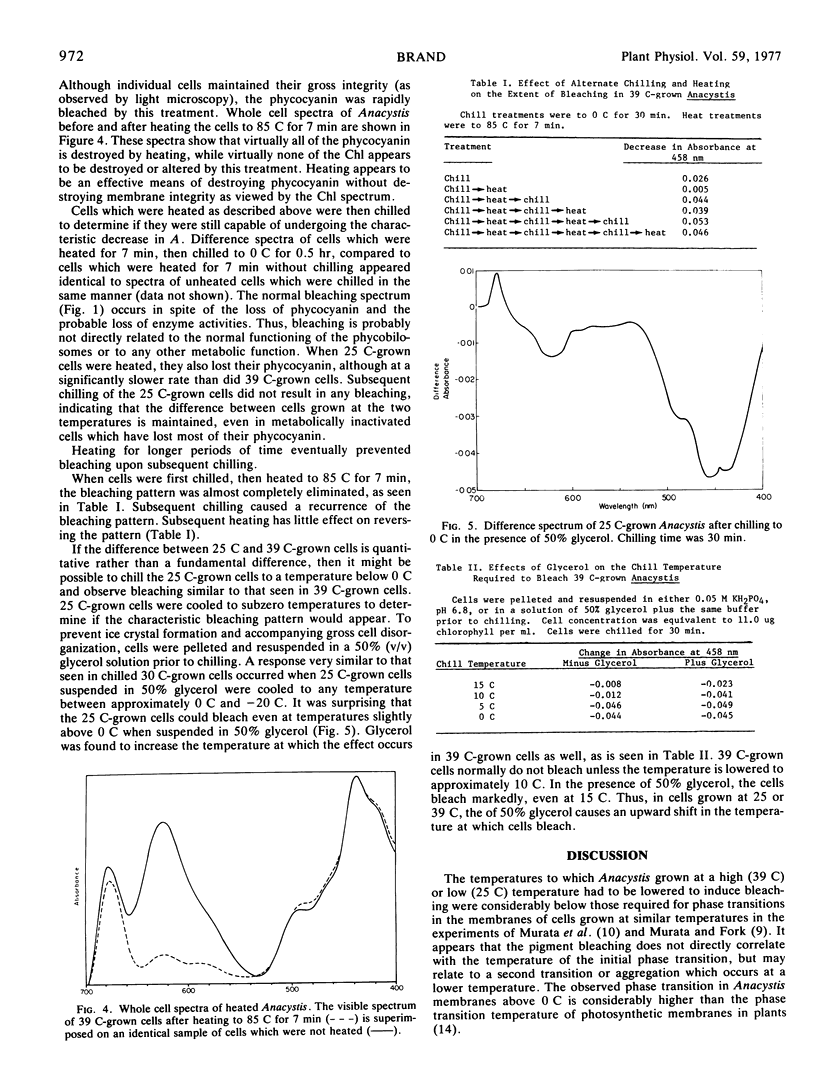Abstract
When Anacystis nidulans, strain TX 20 was grown at 39 C, then rapidly chilled to 0 C, a pigment with a carotenoid-like spectrum was bleached. This effect was not seen when cells which had been grown at 25 C were chilled. The effect seen in 39 C-grown cells was not reversible except under extreme conditions such as heating to near boiling for several minutes. Bleaching could be prevented by prior exposure of cells to glutaraldehyde, but could not be reversed by glutaraldehyde treatment following chilling. The effect occurred upon chilling 39 C-grown cells even after extensive heating at 85 C, a treatment which destroys phycocyanin and metabolic activities. 25 C-grown cells were induced to bleach by chilling when suspended in 50% glycerol. The results are interpreted as indicating a chill-induced change in aggregation state of a carotenoid, which changes its specific absorbance.
Full text
PDF



Selected References
These references are in PubMed. This may not be the complete list of references from this article.
- Forrest H. S., VAN Baalen C., Myers J. Occurrence of Pteridines in a Blue-Green Alga. Science. 1957 Apr 12;125(3250):699–700. doi: 10.1126/science.125.3250.699. [DOI] [PubMed] [Google Scholar]
- Halfen L. N., Francis G. W. The influence of culture temperature on the carotenoid composition of the blue-green alga, Anacystis nidulans. Arch Mikrobiol. 1972;81(1):25–35. doi: 10.1007/BF00715021. [DOI] [PubMed] [Google Scholar]
- Jansz E. R., Maclean F. I. Photosynthetic properties of extracts of Anacystis nidulans prepared by lysozyme digestion. Can J Microbiol. 1972 Nov;18(11):1727–1731. doi: 10.1139/m72-268. [DOI] [PubMed] [Google Scholar]
- Jansz E. R., Maclean F. I. The effect of cold shock on the blue-green alga Anacystis nidulans. Can J Microbiol. 1973 Mar;19(3):381–387. doi: 10.1139/m73-062. [DOI] [PubMed] [Google Scholar]
- Murata N. Relationships between the Transition of the Physical Phase of Membrane Lipids and Photosynthetic Parameters in Anacystis nidulans and Lettuce and Spinach Chloroplasts. Plant Physiol. 1975 Oct;56(4):508–517. doi: 10.1104/pp.56.4.508. [DOI] [PMC free article] [PubMed] [Google Scholar]
- Murata N. Temperature dependence of chlorophyll a fluorescence in relation to the physical phase of membrane lipids algae and higher plants. Plant Physiol. 1975 Dec;56(6):791–796. doi: 10.1104/pp.56.6.791. [DOI] [PMC free article] [PubMed] [Google Scholar]
- Rao V. S., Brand J. J., Myers J. Cold Shock Syndrome in Anacystis nidulans. Plant Physiol. 1977 May;59(5):965–969. doi: 10.1104/pp.59.5.965. [DOI] [PMC free article] [PubMed] [Google Scholar]
- Shipley G. G., Green J. P., Nichols B. W. The phase behavior of monogalactosyl, digalactosyl, and sulphoquinovosyl diglycerides. Biochim Biophys Acta. 1973 Jul 18;311(4):531–544. doi: 10.1016/0005-2736(73)90128-4. [DOI] [PubMed] [Google Scholar]


